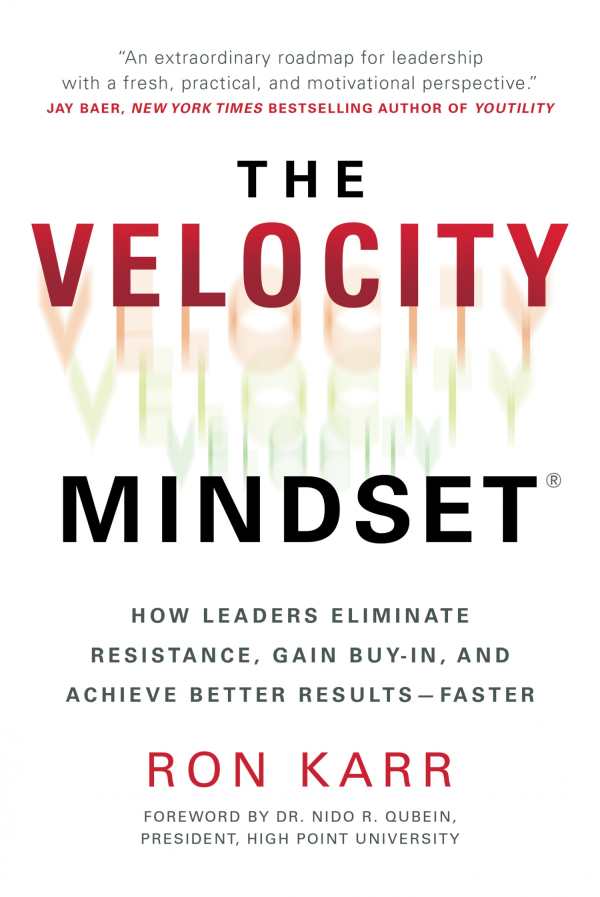The Velocity Mindset
How Leaders Eliminate Resistance, Gain Buy-in, and Achieve Better Results—Faster
The advice in the leadership guide The Velocity Mindset will help business people to speed toward their desired destinations.
Ron Karr’s self-help leadership text The Velocity Mindset suggests exercises and delivers advice to guide people’s personal and professional lives.
In physics, velocity is defined as how fast, and in what direction, a point is moving; in business, Karr defines it as moving with speed toward a defined destination. The mindsets that enable this require alignment between leaders and those around them, he says, to allow leaders to achieve the best results for themselves, their teams, and other partners.
The book is organized around three values: speed, direction, and alignment. Its first section focuses on mastering a mindset that combines speed with direction, which requires silencing the limiting thoughts that keep people from articulating what they want, and directing actions toward achieving ambitious goals without being sidetracked by perfectionism, procrastination, or being busy for its own sake. The book then focuses on the importance of finding and maintaining the right direction by defining the destination early on. Its third section emphasizes the importance of achieving alignment as a leader, both within one’s team and with others working toward the defined destination.
This structure parallels the traditional speed plus direction formula for velocity while incorporating the book’s business-specific emphasis on having a defined destination and seeking alignment. After a slow start, the book gains momentum in its later chapters, becoming more specific and delivering advice that’s applicable in the business world. Text breaks consisting of a lowercase “v,” the scientific symbol for velocity, which are flanked by matching dashes on each side meant to symbolize alignment, echo the three-part structure and encourage pauses to reflect on key concepts. Indeed, Karr emphasizes the power of pausing, saying that it helps to enable recognition of whether one’s objectives have changed, and to make sure that one’s actions still support achieving them.
The book includes some actionable exercises and questions for those who want to implement its advice, including to record reflections on one’s ideal destiny, without regard for past experiences or what they believe is possible. Still, there are not enough of these exercises to make the book a comprehensive toolkit for achieving velocity.
The few graphics in the text are more distracting than they are informative. Two are taken from other sources (with proper attribution), and their concepts and content are clear. But their format does not fit with the rest of the book’s layout, and their graphics are not as sophisticated as the design elements that surround them. Nor does the book add new information to the original graphics; in the end, they don’t enhance the understanding of the concepts they are meant to illustrate.
Karr, an executive coach and former president of the National Speakers Association, also relies on anecdotes from his career as a salesperson, professional speaker, and consultant to illustrate his points. While these support the strategies outlined in the book, some stories are referred to multiple times, slowing the work. Further, the chapters most often provide big picture looks at the concepts behind achieving velocity, rather than focusing on specific skills and strategies to gain speed, direction, and alignment. Still, the conclusion sums up the book’s key concepts in a concise manner, and its extensive endnotes add a sense of authority while providing means of further study.
The leadership guide The Velocity Mindset is a good overview for business leaders looking to achieve alignment and speed toward their desired destinations.
Reviewed by
Charlene Oldham
Disclosure: This article is not an endorsement, but a review. The publisher of this book provided free copies of the book and paid a small fee to have their book reviewed by a professional reviewer. Foreword Reviews and Clarion Reviews make no guarantee that the publisher will receive a positive review. Foreword Magazine, Inc. is disclosing this in accordance with the Federal Trade Commission’s 16 CFR, Part 255.

